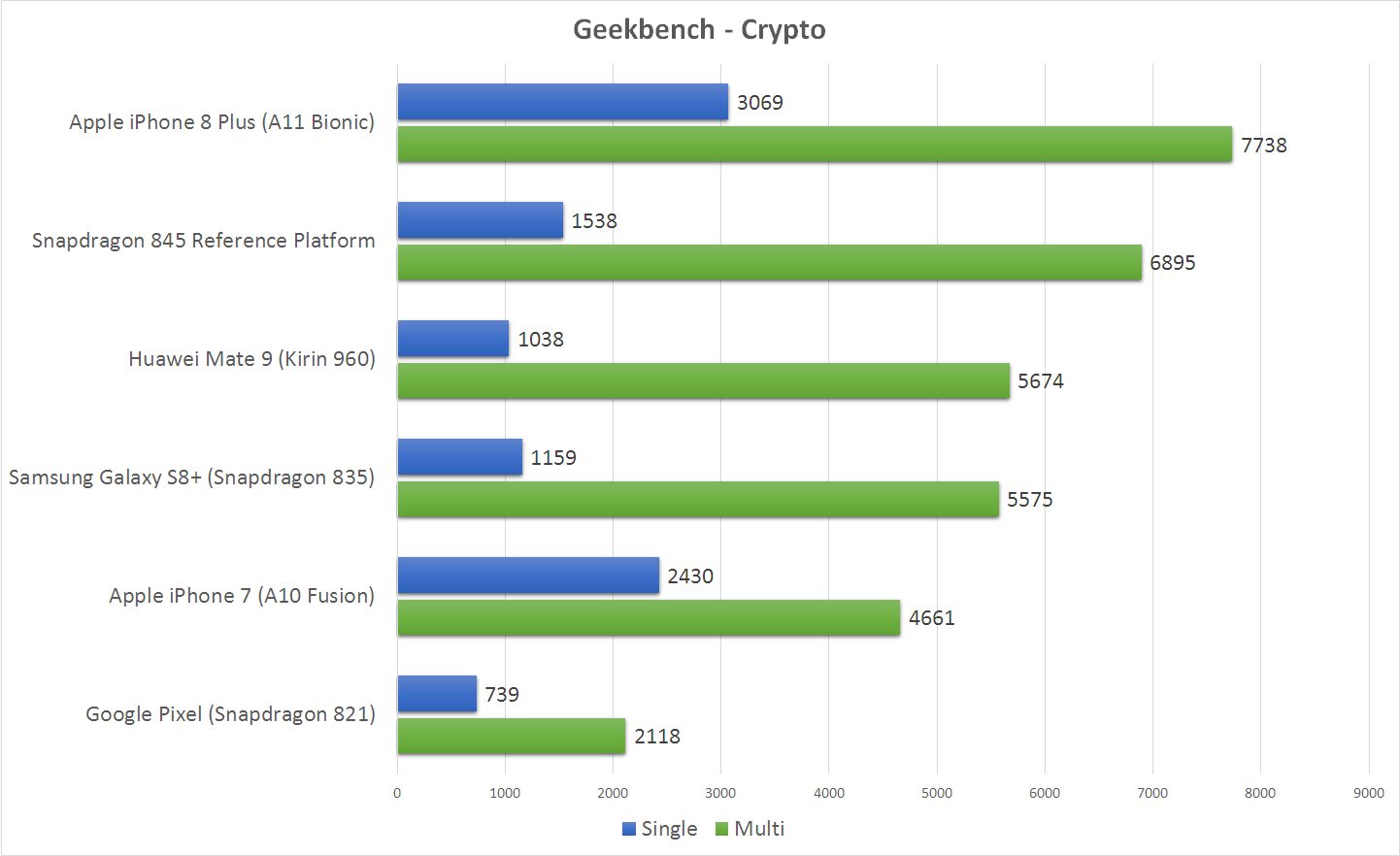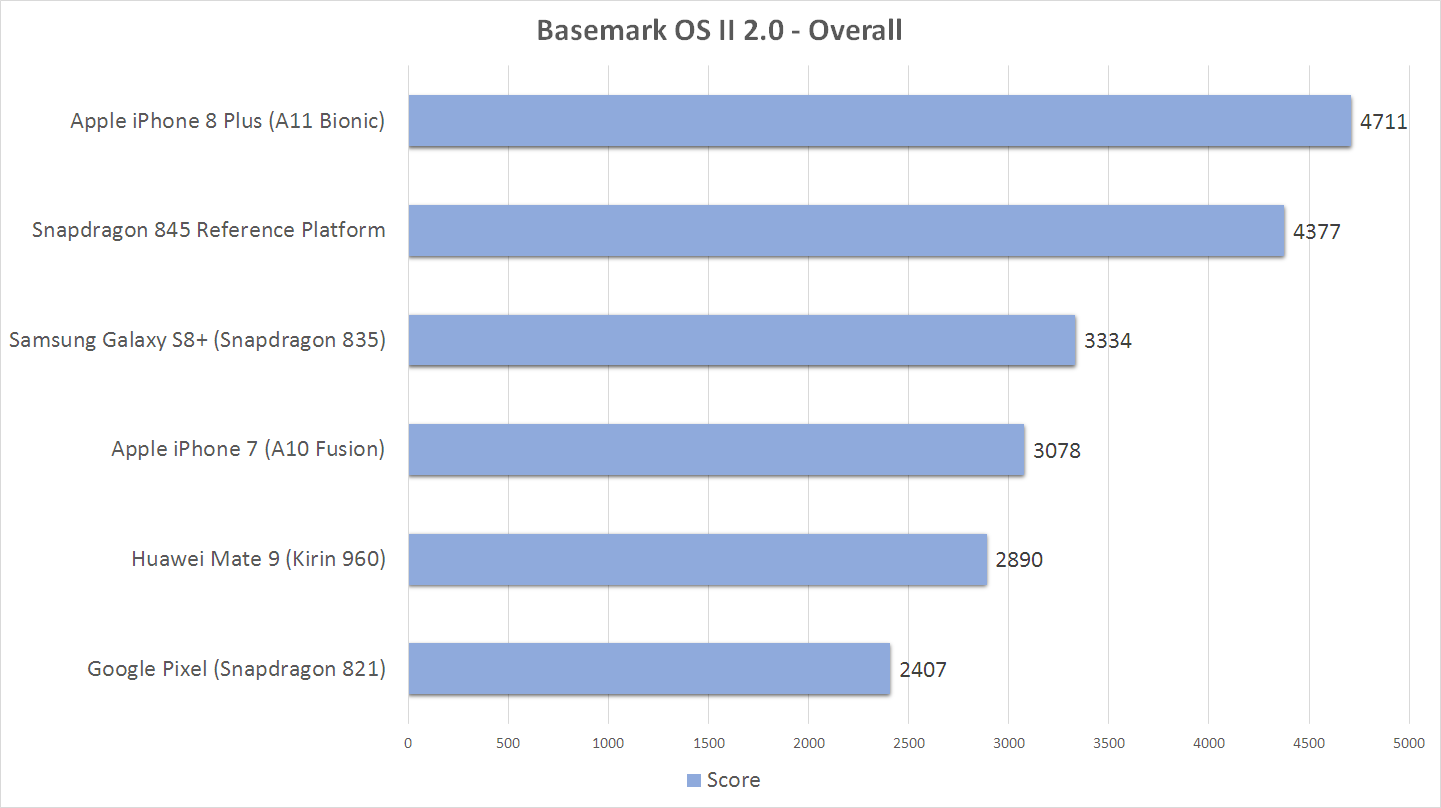The SDM845 Reference Platform and CPU Results
We take an early look at the upcoming Snapdragon flagship
The Snapdragon 845 is Qualcomm’s latest flagship mobile platform, officially announced on December 6 and known officially as the SDM845 (moving from the MSMxxxx nomenclature of previous iterations). At a recent media event we had a chance to go hands-on with a development platform device for a preview of this new Snapdragon's performance, the results of which we can now share. Will the Snapdragon 845 be Qualcomm's Android antidote to Apple's A11? Read on to find out!
The SDM845 QRD (Qualcomm Reference Design) Device
While this article will focus on CPU and GPU performance with a few known benchmarks, the Snapdragon 845 is of course a full mobile platform which combines 8-core Kryo 385 CPU, Adreno 630 graphics, Hexagon 685 DSP (which includes the Snapdragon Neural Processing Engine), Spectra 280 image processor, X20 LTE modem, etc. The reference device was packaged like a typical 5.5-inch Android smartphone, which can only help to provide a real-world application of thermal management during benchmarking.
Qualcomm Reference Design Specifications:
- Baseband Chipset: SDM845
- Memory: 6 GB LPDDR4X (PoP)
- Display: 5.5-inch 1440×2560
- Camera:
- Front: IMX320 12 MP Sensor
- Rear: IMX386 12 MP Sensor
- Audio:
- No 3.5 mm headset jack (Analog over USB-C)
- 4 Digital Microphones
- Connector: USB 3.1 Type-C
- DisplayPort over USB-C
At the heart of the Snapdragon 845 is the octa-core Kryo 385 CPU, configured with 4x performance cores and 4x efficiency cores, and offering clock speeds of up to 2.8 GHz. In comparison the Snapdragon 835 had a similar 8x CPU configuration (Kryo 280) clocked up to 2.45 GHz. The SDM845 is produced on 10 nm LPP process technology, while the SD835 (MSM8998) was the first to be manufactured at 10 nm (LPE). It is not surprising that Qualcomm is getting higher clock speeds from this new chip at the same process node, and increases in efficiency (the new 10nm LPP FinFET process) should theoretically result in similar – or possibly even lower – power draw from these higher clocks.
CPU Performance Results
With a limited amount of time for benchmarking, and an emphasis on repetition for more accurate, averaged results, we don't have a lot of variety to show on the CPU side (GPU benchmarks take much longer). Geekbench is a good place to start, and the results are quite interesting as you will see.
Apple is still on top with their combination of custom silicon/finely-tuned custom OS, but the gap has been shortened considerably by Qualcomm with this new Snapdragon platform running Android 8. While single-threaded numbers are still quite a bit lower than the A11 Bionic or previous A10 Fusion, the Snapdragon 845 shows significant performance gains in that area compared to the previous Qualcomm platform. Overall single-threaded results with Geekbench rose roughly 25% from the Snapdragon 835 to 845, but multi-threaded results are even more significant with gains of more than 35% with the Snapdragon 845, finishing with an average score of 8428 on the latest version of Geekbench.
Continue reading our performance preview of the Snapdragon 845 platform!
A look at the breakdown of the Geekbench results demonstrates the areas where Qualcomm's latest platform has improved over its predecessor:
Memory is the one area where, though improving with the SDM845, Qualcomm's platform is still behind the Kirin and Apple SoCs – at least in Geekbench results. Of note, the Snapdragon 845 reference device was equipped with 6GB of LPDDR4X, which offers lower power consumption than previous-gen LPDDR4 memory.
Next we will check out a couple of whole-system benchmarks to provide a look of expected platform performance. First off is Basemark OS II 2.0, a cross-platform benchmark which uses a mix of applications for its overall aggregate score:
The A11 Bionic is still on top here, but not by a large margin with the Snapdragon 845 seeing large gains over the SD835.
Next we will look at PCMark's Work 2.0 benchmark, which is not available on iOS. This test will at least provide a look at how the Snapdragon 845 compares to the 835, as well as to the Kirin 960.
Even larger gains here compared the the Snapdragon 835, and a very impressive overall score of more than 8000.
On the next page we will take our first look at the all-new Adreno 630 graphics system, which promises to be much more powerful than previous – and already formidable – iterations. How much? Read on to find out!
| Review Terms and Disclosure All Information as of the Date of Publication |
|
|---|---|
| How product was obtained: | The product was tested on-site at Qualcomm offices for the purpose of this review. |
| What happens to product after review: | The product remains the property of Qualcomm. |
| Company involvement: | Qualcomm had no control over the content of the review and was not consulted prior to publication. |
| PC Perspective Compensation: | Neither PC Perspective nor any of its staff were paid or compensated in any way by Qualcomm for this review. |
| Advertising Disclosure: | Qualcomm has not purchased advertising at PC Perspective during the past twelve months. |
| Affiliate links: | This article contains affiliate links to online retailers. PC Perspective may receive compensation for purchases through those links. |
| Consulting Disclosure: | Qualcomm is a current client of Shrout Research for products or services related to this review. |















Has anyone been able to get
Has anyone been able to get root access on the sample device, if so, were you able to overclock the SOC?
It would be interesting to see how far the CPU and GPU can be pushed, and if it throttles.
What throttles on a smartphone should be fine in a tablet where a larger heat spreader can be used.
I’m not really a big fan of
I’m not really a big fan of antutu and slingshot benchmarks
First of all with Antutu, I found that the scores fluctuated quite a bit over the course of one year. My 7plus started off with a score of 183,000, but now struggles to hit 160,000, where as the 835 devices started off with around 175,000, but now their scores are well in the 200,000s. This seems quite odd, and there is no explanation on why this happened.
Next up, I found that futuremark’s physics tests run poorly on iPhones versus android phones, because their physics engine doesn’t take full advantage of the 6-wide pipeline on A-series chips, but instead prefer higher clocks and more cores. Future mark has posted an article a while back explaining why the iPhone 5S with a CPU that is twice as fast as the iPhone 5 scored the same in physics tests. Also, I realized that for some reason it doesn’t like low overhead APIs. I was quite confused when I saw how much lower the iPhone 8 plus’s slingshot extreme score was compared to the snapdragon 835 in the same benchmark, and after that I realized slingshot extreme was running on metal on iPhones and ES 3.1 on android. When I set my note 8 to use vulkan instead, the scores dropped dramatically, an almost 30% drop.
Apples single core cpu
Apples single core cpu performance is still astonishing to me, it might move macos off intel architecture in the future if it keeps this pace
One of the only areas that
One of the only areas that Apple got right with mobile devices, is ignoring the numbers game and focusing primarily on single threaded performance. This has allowed apple to effectively implement improvements which impact 100% of software. With other chip makers, they quickly went for 4-10 cores, focused very little on IPC, and ignored the fact that most apps still fail to use multiple threads, thus you only benefit from those cores when multitasking.
When you improve IPC, then every single piece of software benefits, when you increase core count, then only multithreaded software benefits.
While the SD845 s good, imaging if instead of 8 cores, it had 4 cores with twice the IPC (twice the single threaded performance)? You would end up with similar overall scores, but you would have a better user experience as common single threaded but demanding tasks, would get a large performance boost.
Now, how it compares to Ryzen
Now, how it compares to Ryzen APUs (mobile and… desktop)?
Who wants any new smartphones
Who wants any new smartphones causeing too much extra stress on the DRAM supply chain. It’s too bad that folks building PC or wanting to add more DRAM to laptops have to spend all of their money there and have none remaining for any yearly smartphone upgrades. Yes that’s because of those big 3 Dram Makers charging so much for DRAM lately.